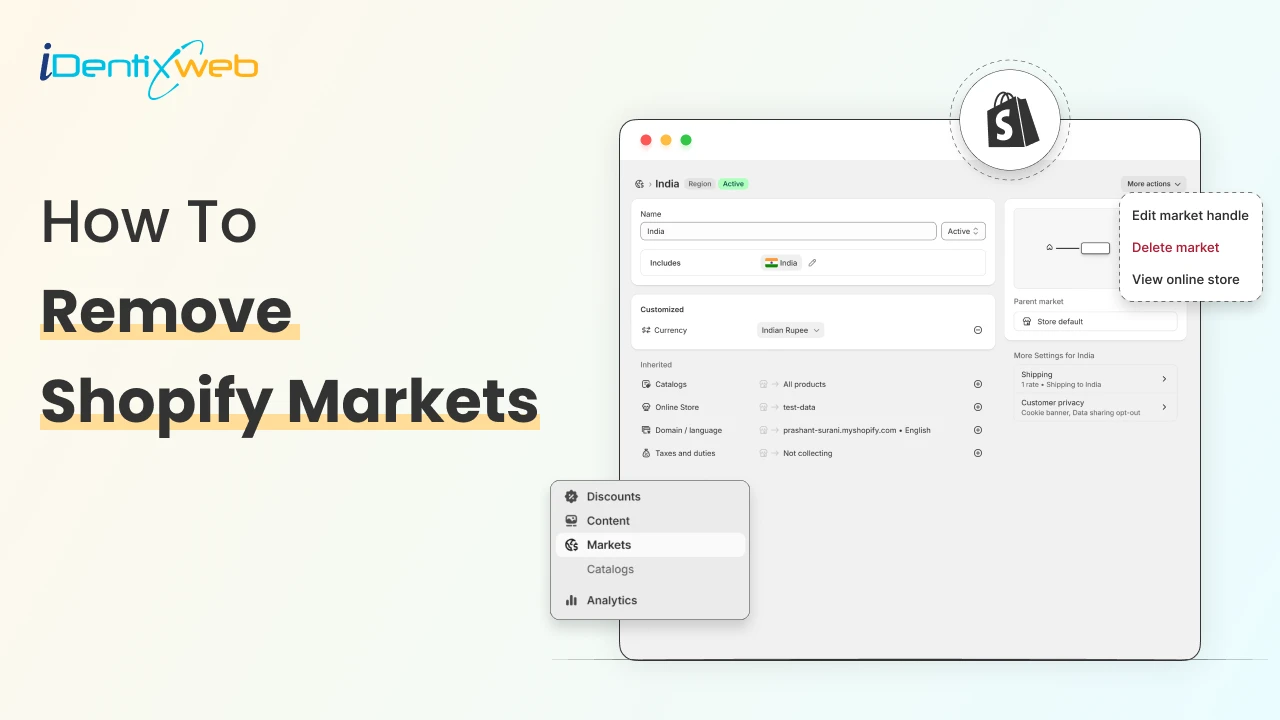
Building a successful Shopify store takes time, effort, and resources. But no matter how strong and smooth your operations are, there’s always a risk lurking around the corner: fraud.
Ecommerce fraud is a growing concern for Shopify store owners, especially in a time when cybercriminals are becoming more sophisticated. This is why ecommerce fraud prevention should be your top priority.
Fraudulent activities can lead to:
- Financial losses
- Damage to your Shopify store's reputation
- A loss of customer trust
In 2024 alone, U.S. ecommerce merchants faced losses of over $44 billion due to fraud.
The good news is that with the right tools and strategies, you can protect your store from the most common fraud tactics.
As Shopify experts, we regularly come across ecommerce fraud stories from store owners.
In this article, we'll walk through practical methods to safeguard your Shopify store, ensuring you don’t become another statistic in the rising tide of ecommerce fraud.
What is Ecommerce Fraud? Definition + Types
Ecommerce fraud refers to any deceptive or criminal activity that occurs during online transactions, with the intent to gain financial or personal benefit.
This is performed by scammers who exploit loopholes in the online shopping process.
To understand ecommerce fraud prevention tips, first, you need to know the different types of ecommerce fraud.
Triangulation Fraud: Fake Store Schemes
It is a complex scheme where fraudsters create fake online stores to gather stolen credit card information.
They process orders using the stolen details, but instead of sending the product themselves, they purchase it from a legitimate store (your Shopify store, for example) to fulfill the order. You’re left with a fraudulent order and a potential chargeback.
Refund Fraud: Return Abuse
Here, customers return used, damaged, or stolen products to claim a refund. This can be tough to spot, as it may seem like a legitimate return at first glance, but it can cause significant losses if it happens frequently.
Card Testing: Stolen Card Validation
This is where fraudsters make small, low-cost transactions in your store using stolen card details.
They’re not interested in the items. They just want to test if the card works. If they’re successful, they’ll try larger, more damaging transactions, leaving you with potential losses.
Account Takeover: Hijacking Customer Accounts
This occurs when a fraudster gains access to your customer’s account by stealing login credentials.
Once inside, they make unauthorized purchases, often using saved payment methods. The impact here is twofold: You're losing both the goods and the payment, plus the damage to your customer’s trust.
Leverage Shopify’s Tools For Ecommerce Fraud Prevention
As a Shopify store owner, you already have access to a variety of built-in tools that can help you combat fraud without the need for third-party apps or additional software.
Fraud Analysis
Shopify’s fraud analysis tool provides you with detailed insights into potential risks associated with an order. It flags suspicious transactions by analyzing key indicators such as mismatched billing and shipping addresses, unusual order amounts, or a customer’s history of chargebacks.
Read Shopify’s official manual for Fraud Analysis to learn more.
Shopify Protect

For U.S. merchants using Shop Pay, Shopify offers Shopify Protect. This feature is designed for ecommerce fraud protection against chargebacks for eligible transactions automatically.
If a customer disputes a charge made through Shop Pay, Shopify will handle the process, and you won’t be held liable for the chargeback. This fraud protection for ecommerce stores covers the full amount of the transaction.
Shopify Flow

For stores on Shopify Plus, Shopify Flow offers advanced automation capabilities to streamline your ecommerce fraud prevention efforts further.
With Shopify Flow, you can set up custom workflows that trigger actions when certain fraud indicators are detected.
For example, you can create a flow that flags orders with mismatched addresses or orders from high-risk countries. This sends an automatic email to your team to review the transaction manually.
Two-Factor Authentication (2FA)
While Shopify’s fraud tools focus on transactions, protecting your admin account is just as important.
Enabling Two-Factor Authentication (2FA) on your Shopify admin account adds an extra layer of security. With 2FA, even if a hacker manages to obtain your password, they won’t be able to access your account without the second authentication factor.
Ecommerce Fraud Prevention: Additional Tips
In addition to Shopify’s built-in tools, there are simple yet effective measures you can take to further protect your store from fraud:
Clear Return Policies
Display your return and refund policies prominently. This sets expectations and discourages refund abuse, where customers scam your system to get money back for used or stolen items.




![Shopify Launches Winter 2026 Edition: RenAIssance [Key Updates Explained] Shopify Launches Winter 2026 Edition: RenAIssance [Key Updates Explained]](https://www.identixweb.com/wp-content/uploads/2025/12/11-12-Thu-Blog-Shopify-Launches-Winter-26-Edition_-RenAIssance-1.webp)

About the author
Vineet Nair
Vineet is an experienced content strategist with expertise in the ecommerce domain and a keen interest in Shopify. He aims to help Shopify merchants thrive in this competitive environment with technical solutions and thoughtfully structured content.